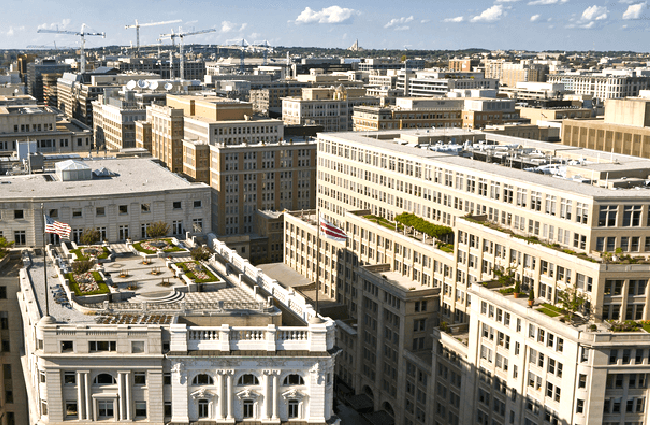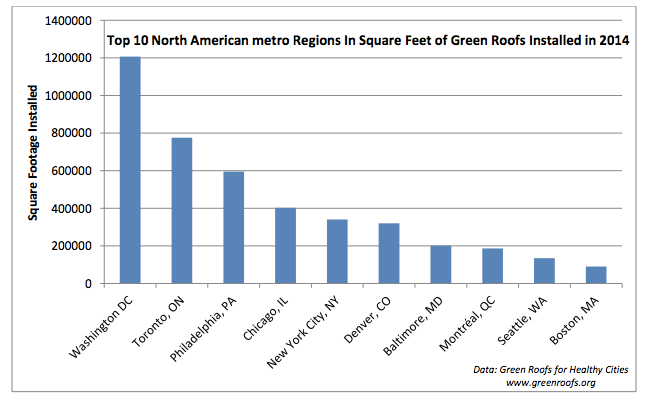

What’s the greenest city in North America? Electric-green cities such as Portland or San Francisco are usually given the title, but according to two new reports that have ranked metropolitan areas on green roofs and energy efficiency, the traditional favorites have not received top billing.
With its installation of 1.2 million square feet of green roofs in 2014, Washington, DC can quite literally claim the crown of greenest U.S. city.
This is according to a new report from the nonprofit Green Roofs for Healthy Cities (GRHC), which has ranked the top ten North American metropolitan regions that have installed the most square footage of green roofs last year.
This is the fourth time the nation’s capital has sat on the top spot. According to a press release, DC has public policies and programs that support green roof investment, including rebates of $7-$15 per square foot per green roof installed and credits that reduce stormwater fees.
Green roofs have a number of environmentally friendly benefits, according to the U.S. Environmental Protection Agency. Like an oasis in a concrete jungle, green roofs absorb heat which helps mitigate urban heat islands. They also act as insulators for buildings and thus reduces a building’s energy needs for cooling and heating.
Green roofs aren’t just good for the environment. A new study from the University of Melbourne found that being on a rooftop gardens for 40 seconds can markedly increase concentration and productivity levels.
Toronto, Philadelphia, Chicago and New York City round out the top five. Incidentally, this is the first time a Canadian city has entered the top five, thanks to Toronto’s 2009 law mandating that all new buildings include rooftop plants.
“It comes as no surprise that the top performing regions are those that invest directly and indirectly in green roof infrastructure projects to create green space, mitigate storm-water run-off, improve air quality and moderate the urban heat island effect,” said GRHC founder and president Steven W. Peck.

 233k
233k  41k
41k  Subscribe
Subscribe 

